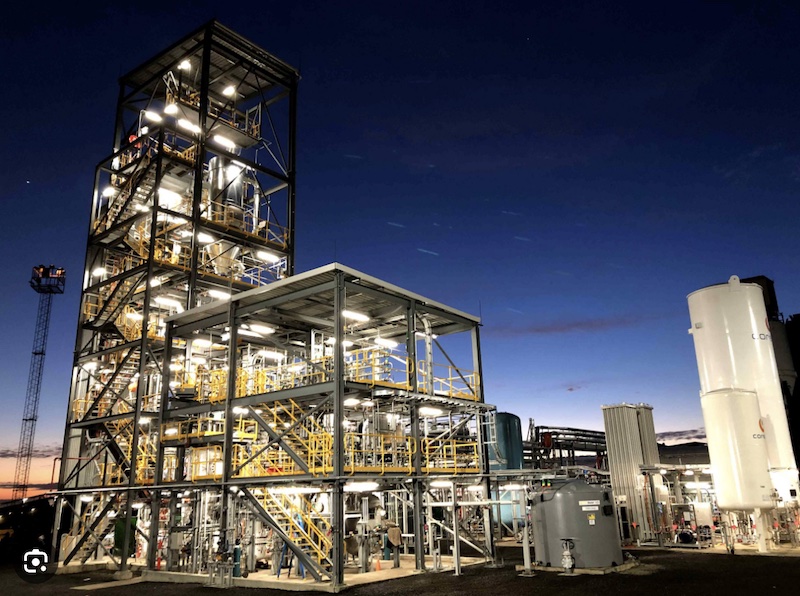The jury remains out on hydrogen. Yet a massive new fossil fuel project planned for Victoria’s Western Port Bay, to supply energy for Japan, is subsidised by state and federal governments. Sarah Russell and Jane Carnegie report on the risks to the local environment and the planet.
If the Hydrogen Energy Supply Chain (HESC) project proceeds, it will create around 3 million tonnes of new CO2 equivalent (CO2e) emissions per annum, according to estimates by The Australia Institute (TAI). This is the equivalent of 735,000 new petrol cars on our roads.
The $500m HESC pilot project was subsidised by $50 m each from the Federal and Victorian State Governments.
The HESC project plans to use coal gasification to create hydrogen from coal supplied by AGL in the Latrobe Valley. The project provides a new potential for coal to be burned many years longer than had been planned by AGL’s coal-fired power stations. HESC was given social licence and political impetus following the closure of Latrobe Valley coal production and the spectre of widespread unemployment.
The fossil fuel lobby is busy selling hydrogen as ‘clean energy’, but this is only the case if the manufacturing process is emissions-free, using renewable energy to create hydrogen. This is not the case with HESC.
Creating hydrogen from coal is more emissions-intensive than burning coal for electricity; so, potentially, the emissions would be higher than in just letting the old coal power stations continue to operate as they were.
If this project proceeds, it would make it impossible for Victoria to meet its emissions targets reductions of 75-80% by 2035 and net zero by 2045, say analysts. Moreover, the project will endanger Western Port Bay, a Ramsar-listed wetland of international significance and the only UN Biosphere in southern Australia.
Hydrogen has been sold by the fossil lobby as the new miracle ‘clean’ fuel. However, although the science stacks up, the commercial reality of hydrogen is not meeting expectations. (Yet the massive government subsidies continue.)
Consultant Calamity: Alan Finkel, ACIL Allen and the hydrogen hype
Good for jobs, bad for the planet
Gippsland Trades and Labour Council secretary Steve Dodd welcomes HESC as “good news for jobs and good news for the future of the [Latrobe] Valley”.
Many residents and environmentalists disagree. HESC may create new jobs, they say, but it is bad news for the environment and the planet.
The HESC proposal risks negative environmental impacts at every stage of its ‘supply chain’ from the Latrobe Valley to Kobe in Japan.
After it is produced as gas in the Latrobe Valley, the hydrogen is to be transported by building a new 150 km hydrogen pipeline. This pipeline would be carved out from the Latrobe Valley to a site at Western Port at Hastings. It would pass through the valuable wetlands and food growing regions between Loy Yang and Western Port Bay. As such, the pipeline has the potential for environmental degradation.
At Hastings, it is proposed to build a massive new facility to liquify the hydrogen before it is loaded on a ship for the 11,000-kilometre journey to Kobe in Japan. The liquefaction and shipping process would add many more thousands of tonnes of new emissions on top of those already coming from the Latrobe Valley.
Victorian government’s each-way bet
Why would the Victorian government put the precious environment of Western Port at risk, especially when it has earmarked Hastings for its Wind Farm staging post? The wind farm project is critical to Victoria having renewable energy to power the state. This project is the opposite, and Western Port simply cannot sustain both.
To transport the liquified hydrogen, it is frozen to minus 250 degrees and then loaded onto a ship. The Japanese built the world’s first liquefied hydrogen carrier, the Suiso Frontier. This ship was launched with great fanfare in 2021. It was also spotted recently in the port of Hastings. Larger ships are now being considered for the project.
The three main partners behind HESC are Kawasaki, Sumitomo and J-Power, all large Japanese companies. About half a billion dollars has already been invested in the HESC. The Victorian and Federal governments have also made substantial investments, but it is not clear exactly how much of taxpayers’ money is to be spent all up.

Suiso Frontier in Hastings. Image via Twitter
What is clear, however, is that the pilot project in 2022 was a failure. It was expected to produce three tonnes of liquified hydrogen, but this amount could not be extracted from the coal. Extra hydrogen had to be bought commercially. And then the ship carrying the liquified hydrogen caught fire in Hastings. If the hydrogen had exploded, which was a possibility, as it is a volatile gas, it would have been catastrophic for Western Port Bay.
But despite the failed pilot project, the Japanese consortium and their partners continue to push ahead, putting pressure on the Victorian government to approve full-scale production.
To coincide with the Japan Australia Business conference, Labor MPs, including Victorian Treasurer, Tim Pallas and Federal Minister for Resources, Madeleine King, together with some local councillors, were given a tour of the Suiso Frontier during its recent return visit to the Hastings.
When the hydrogen reaches Japan, it is to be re-branded as ‘clean energy’, despite that it was produced by burning brown coal, the dirtiest of coals. The consortium is pinning its hopes on carbon capture and storage (CCS) technology to miraculously turn this dirty brown hydrogen project into a ‘clean energy source’.
The CCS myth
CCS has never worked at large scale anywhere in the world with both operational and commercial success, and nowhere in coal gasification.
According to Bruce Robertson at the Institute for Energy Economics and Financial Analysis, close to 90 percent of the proposed global carbon capture capacity in the power sector has failed at the implementation stage or was suspended early.
The HESC consortium is relying on Carbonnet to provide the CCS technology.
CarbonNet has been fully funded by the Victorian Government, CSIRO and several universities. However, the responsibility for capturing and containing the project’s carbon emissions is unresolved, with the state government potentially liable, according to Peter Hannam in The Guardian.
The fact remains that HESC involves coal mining, will demand significant water, and will produce large quantities of waste, sludge and massive new emissions. HESC will keep the dirty brown coal industry alive for decades. The project is a win for the fossil fuel lobby. As for community licence to operate, this has not been properly tested by either the Federal Government or the Victorian Labor government.
“Only in Australia”: Glencore greenwash scraps coal mine for even more toxic blue hydrogen


